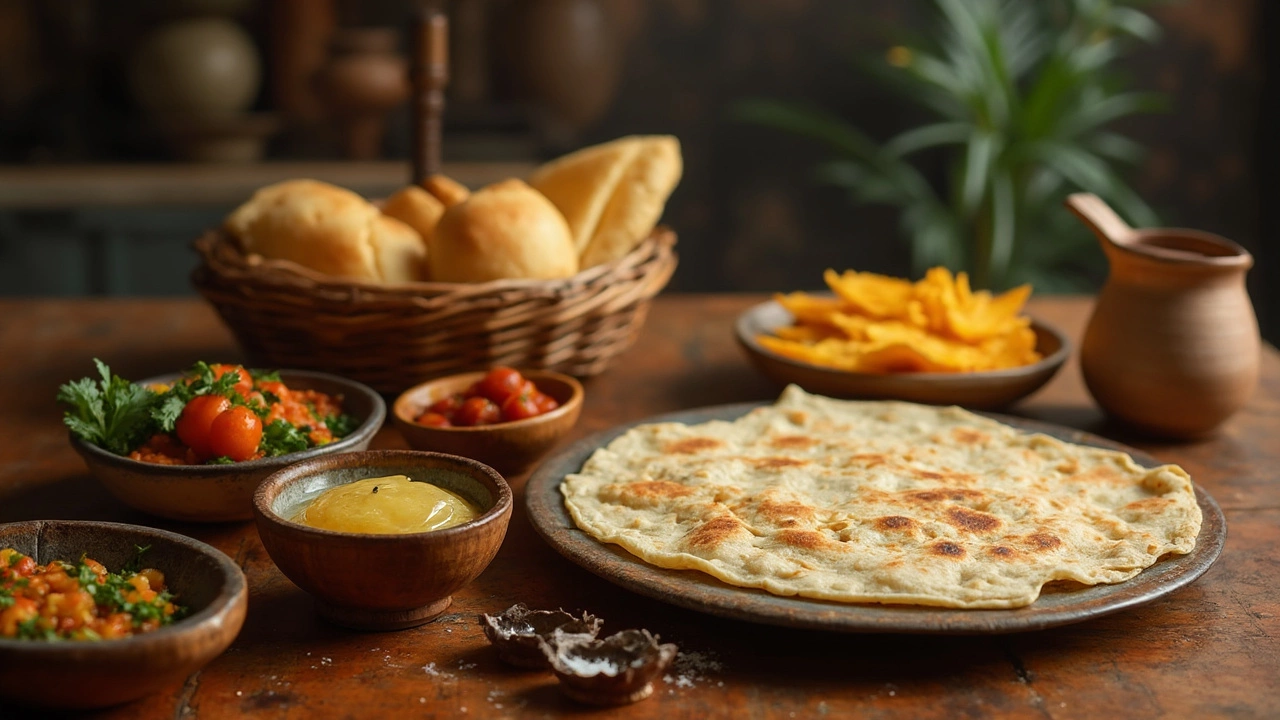Bread vs Roti Calories: How They Measure Up
When talking about Bread vs Roti Calories, a side‑by‑side look at the energy content of Indian flatbreads and common wheat breads. Also known as calorie comparison for breads, it helps you decide which loaf fits your diet plan.
One of the first things to know is that Roti, a thin, whole‑wheat flatbread cooked on a hot griddle typically carries fewer calories than a similarly sized slice of white bread. The reason? Roti uses only flour, water, and a pinch of salt, while many store‑bought breads add sugar, oil, and preservatives that bump up the calorie count. If you swap out a regular sandwich roll for a roti, you might shave off 30–50 calories per serving.
Another common flatbread is Naan, a leavened, buttery bread often brushed with ghee before cooking. Naan's richer ingredients push its calorie tally higher than roti, usually landing around 200‑250 calories per piece. Then there’s Paratha, a layered, pan‑fried bread that uses oil or ghee in the dough and during cooking. Paratha can easily top 300 calories per serving, making it the most calorie‑dense option among the three.
Why the calorie count matters for everyday meals
Understanding bread vs roti calories isn’t just a numbers game. It influences how you balance meals, especially if you’re watching weight or managing blood sugar. For instance, pairing a high‑calorie naan with a creamy curry can quickly add up, while a light roti paired with a protein‑rich dal keeps the plate modest in energy. The choice also affects nutrient intake: whole‑wheat roti delivers more fiber than white bread, which helps you stay full longer.
Most people think all breads are the same, but the cooking method changes the math. Baking a loaf traps moisture, often requiring less added fat, whereas pan‑frying (as with paratha) drenches the surface in oil, inflating the calorie count. If you’re cooking at home, you can control these variables – swapping ghee for a spray of olive oil, or using whole‑grain flour for extra fiber.
The collection below dives deeper into these topics. You’ll find practical tips on how to puff a roti without extra calories, why some cooks add baking soda to roti dough, and even a quick guide on estimating the calorie load of your favorite flatbread. Whether you’re a novice cook or a seasoned foodie, the articles will give you the facts you need to make smarter bread choices.
Now that you’ve got the basics, scroll down to explore each post and learn how to balance flavor, tradition, and nutrition in every bite.

Roti vs. Bread: Which Has Fewer Calories?
When it comes to a staple like bread or roti, knowing which one has fewer calories can make a difference in how you approach your diet. This article breaks down the calorie content in common servings of roti and bread, providing real-world insights and a side-by-side comparison. Find out how ghee or sabzi impacts the calorie count and learn practical tips for making healthier choices without sacrificing taste.